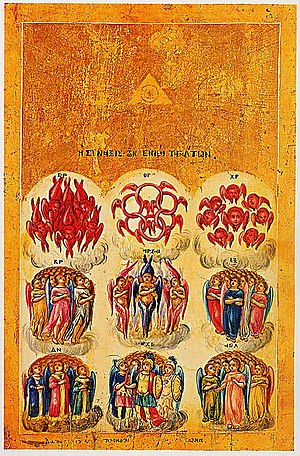Hierarchy of angels
Dionysius described nine levels of spiritual beings which he grouped into three orders:[1][2][3] During the Middle Ages, various schemes were proposed, some drawing on and expanding on Pseudo-Dionysius, others suggesting completely different classifications.
Bonaventure summarized their nine offices as follows: announcing, declaring, and leading; regulating, enforcing, and commanding; receiving, revealing, and anointing.
Of the angelic orders, he asserted that only the lowest five are sent by God to manifest themselves in the corporeal world, while the four highest remain in Heaven at His presence.
[6][7] There is no standard hierarchical organization in Islam that parallels the Christian division into different "choirs" or spheres, and the topic is not directly addressed in the Quran.
For example, Angels in Dungeons & Dragons, a subgroup of the beings called Celestials, come in three different types, the progressively more powerful Astral Deva, Planetar, and Solar.


